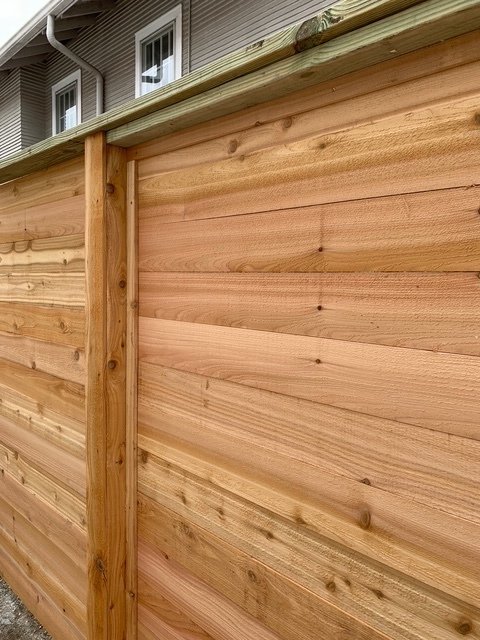The Quiet You Deserve
Here in Southeast Louisiana noise-reducing fences are needed, life is full of sounds—traffic, neighbors, storms, occasional construction. While these are part of the landscape, many homeowners are discovering that they don’t have to accept them as the background to daily life. A well-designed noise-reducing fence can significantly lower the intrusion of unwanted sounds, helping bring more tranquility to your porch, yard, or backyard living space.
At Tony’s Fencing and Iron Works, we don’t just build fences — we build solutions. Our goal is to help you reclaim your outdoor space through thoughtful design, improved materials, and expert installation.
What Really Makes a Fence Reduce Noise
To understand how a fence can reduce noise, it helps to know how sound works and which fence attributes matter most.
| Factor | Why It Helps |
|---|---|
| Height | Taller barriers block more sound. A fence must be taller than the line of sight between you and the noise source to be effective. Research shows increasing height by a foot or two often yields noticeable noise reduction. Fencing Direct+2Broward County Fence & Pergola+2 |
| Density/Mass of Material | Denser materials absorb or reflect more sound. Light, hollow fences (like chain link) allow sound to pass through; heavy wood, solid composite, or masonry provide better barriers. Second Skin Audio+1 |
| Continuity / No Gaps | Even small gaps let sound leak through. Overlapping or tightly fitted boards, sealed joints, and no spaces at ground level make a big difference. A G Vinyl Fencing+2Fentech Fence+2 |
| Proximity to the Noise Source | Placing the fence as close as possible to the noise (e.g., along the property line nearest a road) helps block more sound before it spreads. Broward County Fence & Pergola+1 |
Material Comparisons & STC Ratings
STC stands for Sound Transmission Class — a measurement that indicates how much sound reduction a barrier (wall, fence, etc.) provides. While most residential fences aren’t laboratory-tested with a high STC value like building walls, there’s helpful data out there:
-
Vinyl fences, especially solid panels, often reach STC ratings of 25–30, depending on height and thickness. A G Vinyl Fencing+1
-
Wood fences (solid privacy wood fences) usually perform in the STC range of 18–24 when well-constructed with tight boards and no gaps. Second Skin Audio+1
-
Fences made of heavier or denser materials (or built thicker) can add even more effectiveness. Some studies show that combining material choices with landscaping (vegetation) or added height raises noise reduction further. GSSRR+1
So although a fence won’t make everything silent, the right design can reduce distracting sounds significantly — often by several decibels, which is enough to turn a noisy yard into a much calmer one.
Best Designs & Enhancements for Louisiana
Given our climate (high humidity, frequent rain, storms) and common noise sources (roads, neighbors, general traffic), here’s what works best:
-
Solid Wood Panels
Thick, tightly fitted wood boards (cedar, cypress, treated pine) with no gaps. A board-on-board design or overlapping boards help reduce leaks of sound. -
Composite or Vinyl Solid Panels
These materials resist rot, moisture, and pests better than untreated wood. They can hold up longer with less maintenance. Solid tongue-and-groove vinyl panels, for example, are often chosen for their STC benefits. A G Vinyl Fencing+1 -
Mixed Materials
For example, use a solid wood base with mass-loaded vinyl inserts or wrap, or combine wood with masonry or concrete posts. These hybrids can carry the historic or natural aesthetic while improving density and sound performance. Broward County Fence & Pergola+1 -
Height Where Allowed
Louisiana local codes or HOA rules often limit fence height; usually 6–8 feet. Maximize height within allowed limits. In studies, fences of 6-8 feet show notably more noise reduction compared to shorter ones. Fencing Direct+2Broward County Fence & Pergola+2 -
Seal the Bottom Edge & All Gaps
Even a small space between the ground and the bottom of the fence or between boards lets noise through. Use proper installation techniques and consider barrier skirts or ground blocks where needed. Second Skin Audio+1 -
Landscaping Help
Planting dense shrubs or hedges near the fence adds a secondary barrier. Vegetation absorbs high-frequency sounds and helps with visual appeal, moisture control, and even wind break. Some case studies show adding dense vegetation improved fence effectiveness by several decibels. GSSRR
Practical Examples & Case Findings
-
A case study in New Cairo (though in a different climate) showed a standard fence combined with added height and dense vegetation could reduce noise by about 5–7 decibels, which is perceptible in real life. GSSRR
-
Vinyl privacy fences with “solid” or “closed” designs (no hollow gaps, no wide spacing) show much better performance than open or picket styles. Some vinyl fences are rated to block up to 98% of direct sound in certain tests. Fencing Direct
FAQ: Noise-Reducing Fences & What to Expect
Q: Will a fence totally block out road noise?
A: Probably not completely, especially low frequency sounds (like loud trucks or bass). But with proper design (height, solid materials, no gaps), you can reduce a lot of the unwanted noise — usually enough to make your yard noticeably quieter.
Q: How much height do I need?
A: In many cases, 6 to 8 feet provides good results. If local rules let you, even going higher improves performance. Often height is one of the most important factors when comparing designs.
Q: Is wood or vinyl better for this?
A: Both have pros and cons. Wood looks natural and fits many styles, but needs more maintenance (sealing, staining). Vinyl or composite tends to resist moisture and pests better, and solid vinyl panels can have higher STC ratings if built well. If aesthetics and cost allow, wood reinforced or hybrid options combine the benefits nicely.
Q: Does fence placement matter?
A: Absolutely. A fence placed closer to the source of noise (if possible), and with long continuous sections, performs better than a fence that’s further away or has many breaks.
Why Tony’s Fencing & Iron Works is the Right Choice
With years of experience in Covington and Southeast Louisiana, we understand the environmental challenges and local regulations. Tony’s can help you:
-
Choose suitable materials (wood, vinyl, composites) that balance look, noise reduction, and durability
-
Design fences to maximize sound reduction within height limits and property constraints
-
Install tightly and seal properly to prevent sound leaks
-
Incorporate landscaping and other enhancements that complement fence design
We build fences that do more than look good—they make your outdoor space quieter, safer, and more comfortable.
Conclusion
If noise is disrupting your enjoyment of your yard, investing in a noise-reducing fence is one of the most effective steps you can take. By choosing dense materials, ensuring good design (height, no gaps, solid panels), and adding smart enhancements like vegetation, you can create a space of peace.
Call Tony’s Fencing and Iron Works today at 985-703-0595 for a free consultation on the best noise-reducing fence for your property in Southeast Louisiana.



